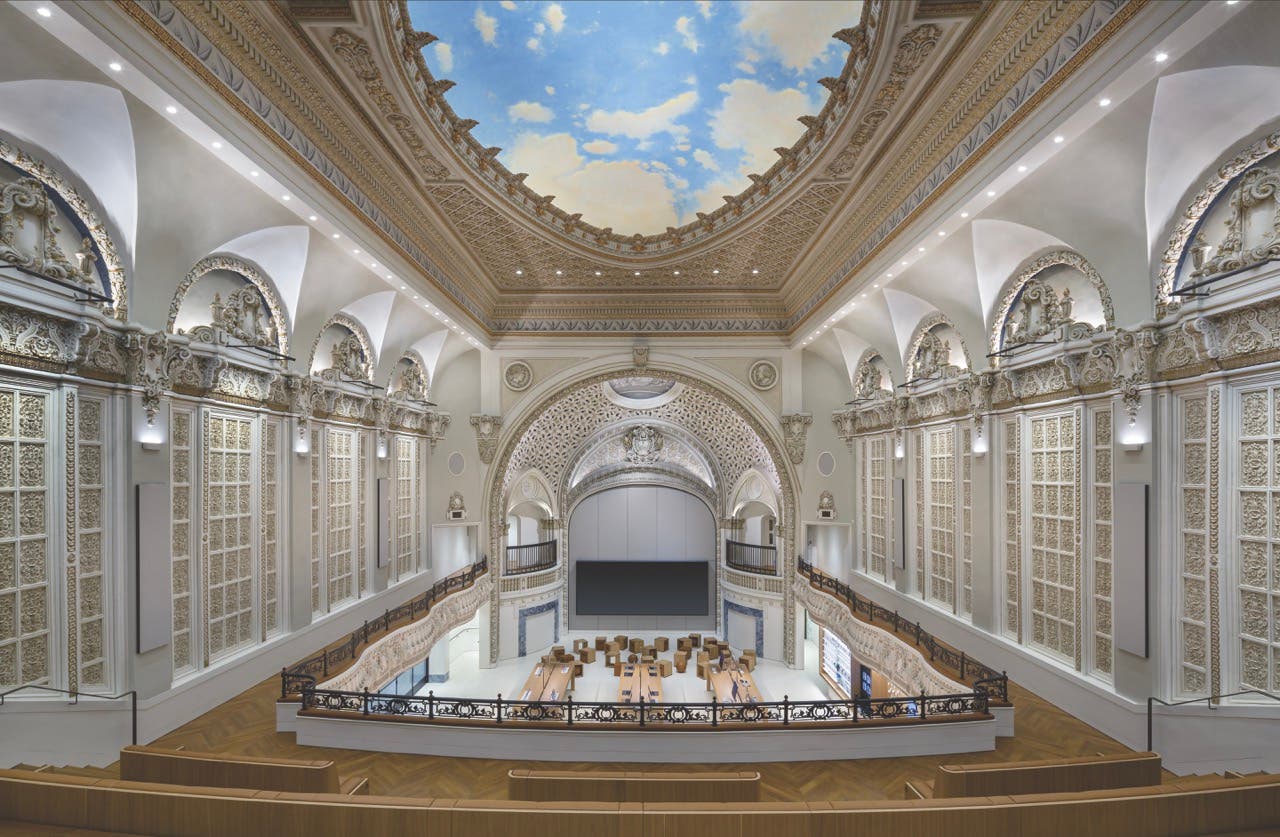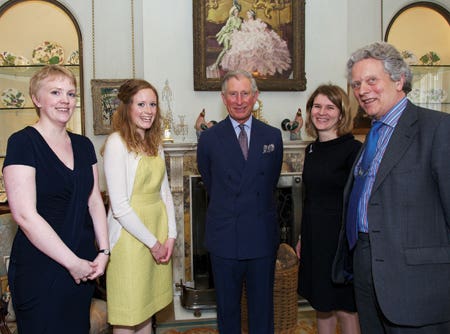
Features
INTBAU Celebrates Tenth Anniversary

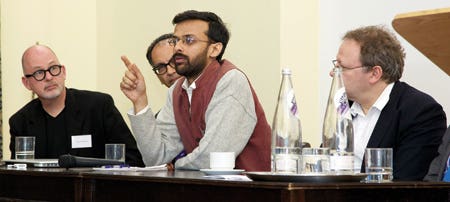
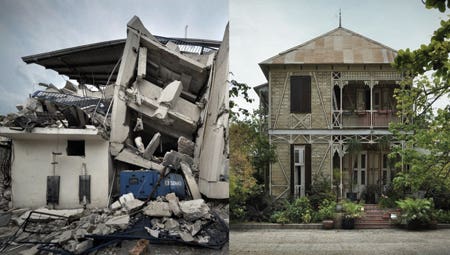
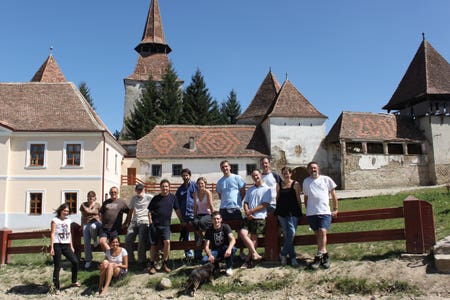
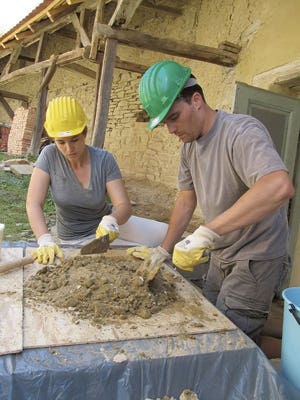
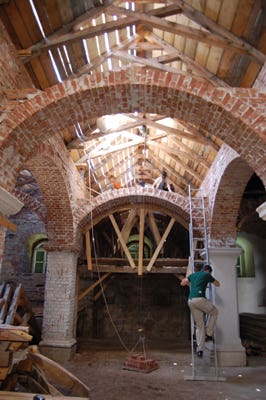
By Michael Mehaffy
Though it does not make headlines, there is a burgeoning movement for traditional building going on around the world. Or to put it more accurately, there are hundreds of such movements in different countries, working to conserve, protect, rebuild, innovate on, learn from and freely practice a mind-boggling range of traditional building arts and crafts. In the process, they are discovering promising new ways of addressing modern challenges of ecological sustainability, local economic development and conservation of local heritage and culture.
All this diversity poses a problem: the different groups of practitioners often don't even know about one another, let alone have the opportunity to collaborate and learn from one another. "Traditional architects and supporters are always minorities within their profession nationally, with a position ranging from being ignored to being attacked," says Robert Adam, a prominent traditional architect in the UK. If they formed larger international associations, "they would not feel isolated and by getting together, could advance their discipline."
That is why, in 2000, Adam and a group of other architects, urbanists and allies of traditional building decided that the time was right for an international organization to connect and to support these disparate groups. Adam told colleagues gathered at that year's "Vision of Europe" conference in Bologna, Italy, that it was time to form a new organization "that is united, tolerant and international; out there; doing the work; and shouting about it, in plain language." In response, a start-up committee led in part by Adam, UK architect Ben Bolgar, Norwegian attorney Audun Engh and Norwegian businessman Petter Olsen - who generously provided funding - launched a year-long research project to examine the issues and opportunities.
The group commissioned UK architectural scholar Matthew Hardy to complete the initial research study, and develop a proposal. On its completion, the group promptly asked Hardy to serve as the network's Secretary, a position he held until 2010, when he became Senior Lecturer for INTBAU's sister charity, The Prince's Foundation for Building Community.
Dead or Alive?
In early 2002, INTBAU held its first public conference; it was called "Tradition Today, Dead or Alive?" That seminal event brought together many of the potential stakeholders of INTBAU, and laid the groundwork for the new organization. Not surprisingly, the conference concluded that tradition is very much alive, but in need of better support, connection and ability to collaborate. Soon afterward, the Prince of Wales agreed to serve as patron for the small organization, and to host its central office activities at The Prince's Foundation headquarters in Shoreditch, London, where it has remained since.
Hooper Brooks, director of International Programmes for the Prince's Foundation, sees a strong relationship between the two organizations – and a strong need for INTBAU's mission specifically. "Beautiful and functional buildings and places are among the fundamental ingredients of social and environmental well-being," he says. Because this connection is not well understood today, Brooks thinks INTBAU and its members can play an important role "to educate a much broader audience, and to help communities all over the world to incorporate its values and principles into action."
One prominent example is in Haiti, where Brooks and his colleagues have been working to rebuild areas devastated by the 2010 earthquake by applying the often impressive characteristics of traditional construction. Those characteristics have been meticulously researched by INTBAU member Randolph Langenbach, a former UC Berkeley architecture professor and earthquake specialist with the Federal Emergency Management Administration (FEMA). At a recent INTBAU-USA conference, Langenbach reported on the impressive performance of a type of traditional timber and masonry construction of French origin known as colombage, as well as other types of traditional Haitian construction with African roots.
The results were striking: many of the so-called "modern" buildings of reinforced concrete were poorly built and collapsed quickly, causing record numbers of fatalities. But Langenbach was astonished to see how well the timber and masonry buildings endured the disaster – many of which were over 100 years old, and suffering from years of deferred maintenance. "They proved to be of a very resilient construction, and almost all of them survived without collapse – often amazingly well," he says. "These systems are also relatively inexpensive to build, using materials that at the time they were constructed were locally abundant – and which, with revival of managed timber agriculture, could be abundant again." That would provide local jobs, ecological restoration, and a sustainable local economy – a "virtuous circle" of benefits.
INTBAU members point to many similar stories from around the world, demonstrating that local and traditional resources are often the most resilient and economically sustainable ones – if they can be recognized and applied. For example, Audun Engh, INTBAU representative from Norway, has been working in Romania, Cuba and other developing countries where traditional building cultures offer a powerful basis on which to build resilient, sustainable local economies, as a balance to the rapid global economic development they are experiencing. He thinks this kind of balance is very important for a sustainable future.
The Modernist Challenge
Two key challenges remain, according to Engh. First, many Modernist architects and other professionals think local traditional designs are not "authentic for a modern age," so they try to restrict alternatives to their own industrialized, globalized designs. "This professional arrogance has done a lot of damage around the world," he says. And second, local residents themselves often do not value what they already have, but look instead to countries like the U.S.A. to provide glamorous new "silver bullet" solutions. Therefore, Engh says, "it is all the more important for those in developed countries like Norway and the U.S.A. to demonstrate what is most valuable in each county, and to provide tools and strategies to unlock their potential."
To these challenges INTBAU members bring a rich diversity of experience and expertise, from the fields of architecture, urbanism, engineering, building, production, crafts trades, and research and academia. The U.S.A. chapter alone has board members from the University of Miami and the University of Notre Dame, as well as the Institute for Classical Architecture and Art, the New Urban Guild, the Building Process Network, and other groups focused on integrated crafts, design and building at a range of scales. The chapter also collaborates with a long list of other US and international organizations.
Hardy remembers a number of momentous events in the growth of INTBAU. One of the most notable was the 2006 INTBAU "Venice Charter Revisited" conference, which resulted in notable changes in the thinking of other leading conservation authorities, and produced a book of terrific essays (which as Hardy points out, is now available in most bookstores!). A key outcome was an ensuing dialogue with ICOMOS, the international body that influences the U.S. Secretary of the Interior's Standards and related policies – the basis of some previously discriminatory policies to effectively prohibit new traditional designs in many areas.
These ideologically-driven policies are now going through a major reassessment, thanks in no small part to INTBAU's actions. A major ICOMOS-US conference last year, meant to kick off a five-year reassessment, quoted INTBAU members' work as a basis to "critically examine the impact of international Charters, Declarations and Doctrines, starting with the Venice Charter, and the effect they have had on the Secretary of the Interior's Standards and U.S. preservation laws."
This and other prominent successes have put INTBAU on a growth trajectory, says Robert Adam, who is now the chair of the College of Chapters as well as the UK chapter. He credits the close partnership with Brooks and others at The Prince's Foundation for Building Community, which has resulted in a "convergence" of the two organizations into sister charities. "After ten years on a shoestring, INTBAU has survived and grown from a small base with minimum funds, and created an international platform," he says.
INTBAU's organizational structure includes a central office in London, hosted by the UK chapter. However, all the chapters are members of an international "College of Chapters." There are now more than 4,000 members worldwide – 900 in the U.S. – but not every member lives in a country with a chapter. Any members within a country can form a chapter if they comply with the constitutional requirements. So far, there are 18 chapters representing countries in North America, Europe, Asia, Africa, Australia and Latin America.
Harriet Wennberg, INTBAU administrator in London, says more chapters are now in formation, and she hopes announcements will be forthcoming about new chapters in several countries including Brazil and even China – though the legalities and diplomatic issues there are a bit complex. These efforts got a big boost from the London conference, she says. "It was encouraging to see so much of what the organization stands for actually taking place – professionals from all corners of the world meeting and exchanging ideas, existing members learning and becoming more involved, new members being recruited, and a lot of dialogue taking place."
College of Traditional Practitioners
INTBAU's College of Traditional Practitioners includes leaders from around the world in traditional design and building, including some familiar American names. The College also includes top-tier academics, including Nikos Salingaros, a Greek mathematician, design theorist and consultant based at the University of Texas.
Salingaros says that what organizations like INTBAU do is critical. "Traditions are incorrectly dismissed as something 'old-fashioned' and unnecessary, but in fact they are sophisticated forms of collective intelligence," he says. "They give us important solutions for today's critical problems, like finding more ecological and sustainable ways of settlement."
Salingaros argues that modern science is discovering how traditions act as evolutionary problem-solving processes, so that "what we see are the most successful solutions from among countless possible variations." He points to the findings of neuroscience, which show that there is an innate human need to experience the beauty of traditional pattern and ornament: "Research is showing that people are healthier and have a higher quality of life when their buildings and cities have these biophilic qualities."
Steve Mouzon, a founding board member of the U.S. chapter, agrees that there is a connection between the sustainability of a tradition and the lovability of its buildings. "If a building isn't lovable, it won't be cared for, and it won't last – which means it won't be sustainable." Mouzon gave a presentation at the 10-year anniversary conference in London, "Architecture in the Age of Austerity," with other INTBAU members from around the world. His presentation included tools and strategies to recover a "living tradition," something he thinks is essential for managing the current set of "convergent crises."
A sampling of projects sponsored by INTBAU shows the remarkable range of chapter activities: traditional building skills training, study tours and classes for designers, conferences on leading research and scholarship, books and other publications, intensive charrettes on community-led planning and building projects, and 'champion' projects to raise public awareness of resources under threat or opportunities being missed. More of these offerings are being developed and added.
Members of the U.S.A. chapter have already attended international INTBAU workshops and conferences in the UK, Italy, Spain, Romania and other countries, with upcoming trips planned for Cuba, Spain and Italy. Allison McSherry, an intern architect with Henneman Engineering in Illinois, recently returned from an INTBAU traditional skills workshop and study tour in Romania, where attendees from a number of different countries studied and worked together. "It was an amazing experience," she says, "getting to work with, and learn from, people from different countries and backgrounds. Hearing the personal experiences from those working in India, Romania, and the UK gave me something priceless."
Braden Herbert, another American attendee at the Romania workshop and study tour, said he came away impressed with INTBAU's mission and vision. "Although I study genetics, I do so in an anthropological framework," he says. "The preservation and documentation of culture, heritage and ethnicity and the relationship of identity and place are very similar to questions I ask in my own studies."
Adam praises such initiatives, stressing that the essence of INTBAU is that it is a global grassroots network of collaborators, not a centralized NGO in London. "Initiatives need to come from chapters, be supported by the central office (including assistance with fundraising) and joined by the international membership," he says. "The way forward lies with its members and chapters."
McSherry for one is excited about INTBAU's growing opportunities for more international collaborations on urgent issues: "I came away from my INTBAU trip wanting to become more involved, wanting to make a difference."TB
Michael Mehaffy is a Portland, OR, author, researcher and consultant in sustainable urban development. He is also founding Chair of the U.S.A. chapter of INTBAU, and a member of the INTBAU College of Traditional Practitioners.





